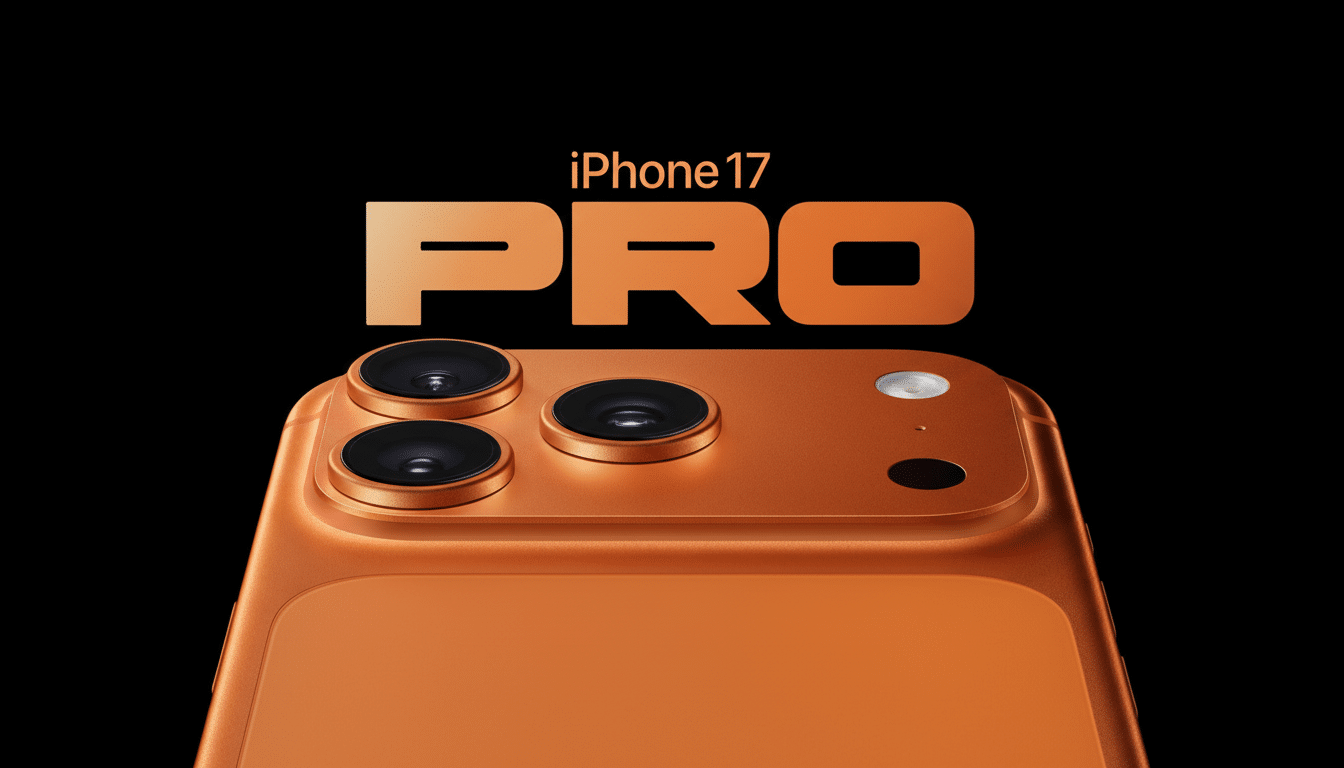Apple’s iPhone 17 Pro models offer a long-sought solution to heat buildup: a vapor chamber that draws the waste heat out of the A19 Pro chip and spreads it through the new aluminum frame. The change is all about the very thing that held back past performance as well: hot spots that resulted in throttling during 4K video capture, sustained gaming sessions, and intense on‑device AI workloads.
How a vapor chamber actually functions
Fundamentally, a vapor chamber is a blown, ultra-thin heat pipe. Contained within is a small quantity of deionized water and a capillary wick system. As the A19 Pro and its clusters of GPUs heat up, that liquid flashes into vapor, rushing to cooler zones where it condenses. The wick then returns the liquid to the heat source, and the process repeats. This phase-change loop is able to carry heat more effectively than solid copper alone, which ultimately lowers peak temperatures around the chip and eliminates thermal spikes.

Apple marries the chamber to the phone’s aluminum unibody, using the chassis itself as a large heat spreader. Heat spread out over a larger area reduces localized hot spots — those that singe fingers — and allows the device more headroom before thermal throttling takes effect.”
Why Apple wanted this now
Modern smartphone workloads have changed. ProRes and high frame rate video, console class games, and on device generative machine learning all require serious sustained performance, not just quick spikes. Earlier models used graphite pads along with copper spreaders; iFixit teardowns have remarked upon that for way too many generations. That was fine for quick tasks, but longer sessions at high loads could still push temperatures high enough to throttle performance.
A vapor chamber has been dedicated to just those sustained loads. It’s also timely. More rapid charging, denser batteries and more tightly water‑resistant enclosures mean less space for heat to dissipate. Thermal management is not just about comfort: too much heat ages batteries prematurely. Guidance from the industry usually says that every 10 degrees C rise can meaningfully speed up capacity loss, so keeping internals cooler should play to long‑term health.
What users should expect in practice
The single clearest difference ought to be stability. In stress tests such as 3DMark’s Wild Life Extreme, Android phones with well‑done vapor chambers usually display higher “stability” scores over 20 runs, which means there is less throttling. Independent labs like Notebookcheck and reviewers who also log performance curves have recorded sustained output increases in the double‑digit range when vapor chambers are properly employed. This trend should carry over: less frame rate fluctuation after long gaming sessions and longer 4K/60 video recording without shutdown warnings.
There’s a tradeoff that users might notice. As the chassis now gets more involved in heat dissipation, heavy tasks can make the phone feel warmer to the touch. The upside is overall temps are more even, and the silicon — the bit most sensitive to heat — stays within your safe-er range. Apple’s thermal algorithms continue to regulate peaks to safeguard components and the battery, but they’re going to kick in less aggressively than before.

Tweaked for the A19 Pro,camera and “Apple Intelligence”
The vapor chamber affords the A19 Pro the space required to run at higher average clocks for longer, which is important for on‑device AI features sold under the Apple Intelligence brand. Those workloads mix CPU and GPU and NPU activity, and can burn through a thermal budget in a hurry. The story is not that different with camera pipelines. ProRes RAW and computational photography stacks are sustained workloads, and they feed on predictable thermal ceilings that can deliver consistent imaging and not rely on making sure you don’t roll the shutter or drop frames because you have to throttle.
Charging also stands to benefit. When you use higher‑wattage charging, it’s normal for the device to get a little warmer, especially in the area around the battery and power management IC. A better dissipating path can lessen thermal derating— the automatic step‑down that slows charging to lower temperatures—and tighten time to full without exceeding safety margins defined by standards bodies like JEITA.
How it’s different from Android cooling
Vapor chambers are not new in phones; gaming-focused models from ASUS and mainstream flagships from Samsung and OnePlus have borrowed this for several generations. Some of them even state area of chamber above 9,000–10,000 mm². Apple’s distinction is system integration. Instead of pursuing maximum cubic inches the company seems to favour a slim, thermally sealed chamber, which is kept in close contact with the frame and software that joins the dots for CPU/GPU scheduling around thermal headroom. That’s the same hardware‑software co‑design formula Apple has optimized to squeeze battery efficiency in earlier models.
What independent testing should confirm
Early hands‑on time is only part of the story. Some third‑party measurements will be reported by teardown specialists or test labs as they track sustained GPU stability over 15–20 minute runs, 4K/60 and ProRes recording duration before squaring up against thermal cut‑offs, exterior temperature mapping under peak load, and charging times at various ambient temperatures. Companies like UL Solutions and known-reviewers-which-logs-power-and-temperature-telemetry can discover whether Apple’s chamber drives real-world performance and hot‑spot severity down.
If the results reflect Apple’s pitch, it means that the vapor chamber will do more than simply keep fingers warm. It would help the iPhone 17 Pro and Pro Max tap into their advertised speeds when it counts the most — during long, intensive tasks that once would have left them breaking a sweat.

